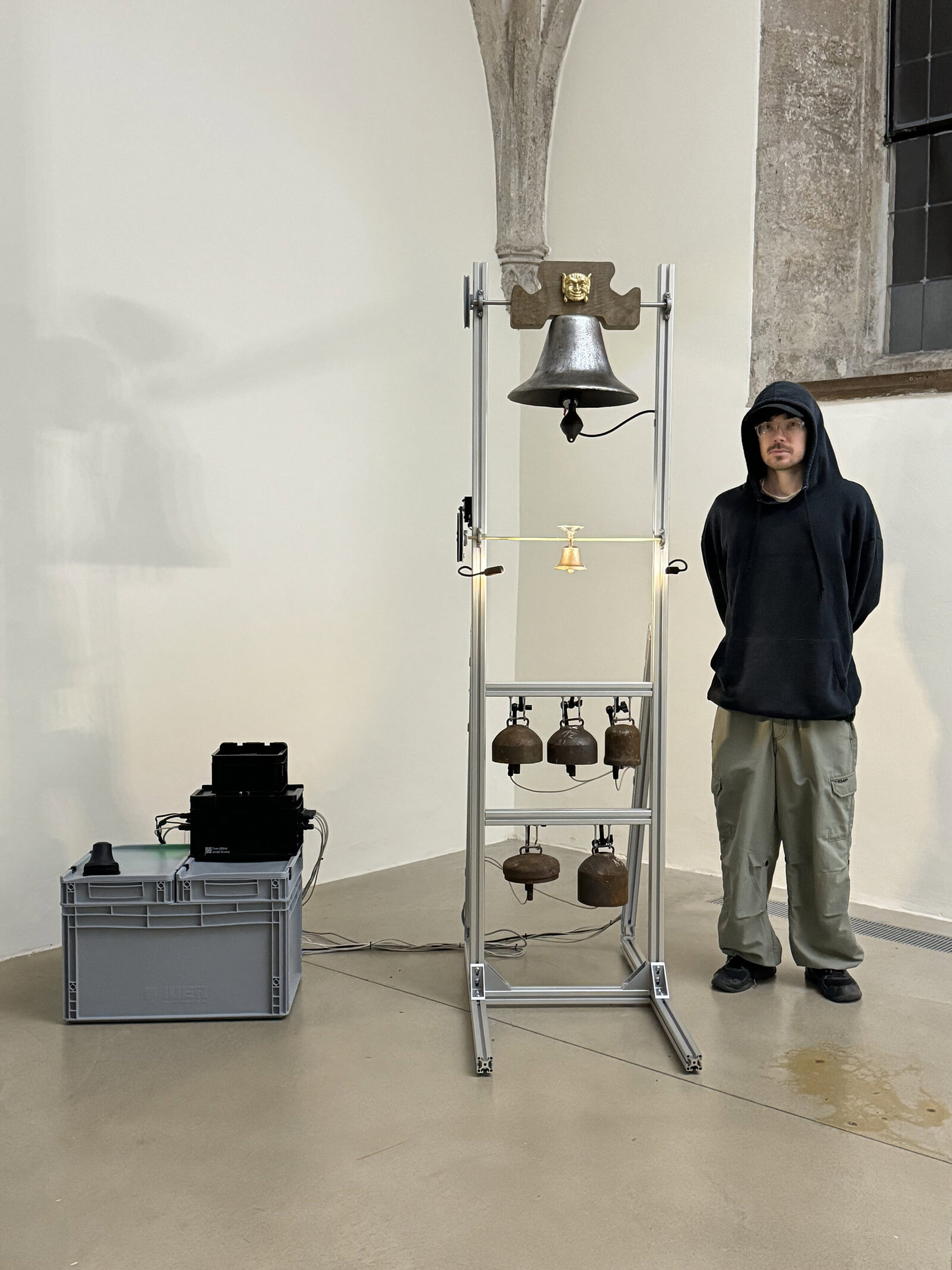-
Location:Justus Lipsiustoren, Janseniuspark
-
Accessibility:This location is not wheelchair accessible.
In a medieval water gate, bells from melted war munitions ring out.

In many societies, clocks have an important alarm, religious or musical function. Throughout history, bells have often been targeted by invading armies. During the World Wars, for instance, it is estimated that more than 150,000 bells were melted to become munitions of war. In his installation Zvon, Slovakian artist Jonáš Gruska pays a personal tribute to the bell. The bottom layer contains handmade bells by a shepherd, made from metal remnants of gas cylinders. The middle layer consists of a shiny brass bell from melted war ammunition, which is a symbolic tribute to all the bells that went through the reverse process. Finally, at the top of the sculpture hangs a larger bell that appears to have been hastily made from impure cast iron, perhaps a temporary bell replacing a stolen one. Each bell is brought to sound by transducers, motors or coils creating a new musical narrative.

At the time, the Justus Lipsius Tower and its counterpart, the Jansenius Tower, on the other bank of the Dijle, were two towers reinforcing a water gate on Leuven’s first, twelfth-century city walls. At the water gate, incoming ships had to pay tolls. Today, the Jansenius tower belongs to the Paridaens Institute, the Justus Lipsius tower to KU Leuven. The university recently had the latter tower, named after the nearby Justus Lipsius College, restored.
Text: Liesbet Nys (KU Leuven)
2024
➤ Production: Shilla Strelka, Klangraum Krems
➤ Special thanks to: Matúš Cepka, Matej Gavula, Jozef Hobor, Mr. Kubizna, Ester Mládenková, Miro Mládenek & Martin Potaš














